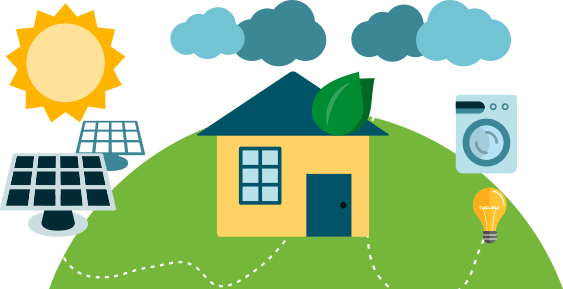

Analyzing the role of cooking with off-grid power
Electrification is being seen as a mission for powering homes in urban and rural centers of India so that more people can have lights, fans, TVs and phone charging. But why can’t we utilize it for something even more? Using electricity for cooking, for instance, will be a great step forward.
Indoor air pollution from biomass burning and stove top cooking causes an estimated 1.3 million deaths annually in India alone. Right now, LPG is being seen as the only alternative, which is quite a narrow approach. Another reason why we should explore alternatives to the LPG cylinder is the fact that the Union Budget for 2016-17 set an aim for extending the LPG base to 50 million BPL families in the next 3 years. Given the fact that there are nearly 120 to 200 million households in India without access to clean cooking solutions, our case for using electricity for cooking is further strengthened.
Switching to Electric Stoves
One reason behind the slow growth of LPG is the fact that it is expensive. India consumes about 23 million tons of LPG in a year, more than 50 percent of which is imported. Even if we put the annual rise in demand at 10 percent, the total cost of LPG acquisition and distribution rises significantly. This in turn reflects on the import bill, the economic growth suffers, and so on and so forth. But even electricity generation requires resources, infrastructure and funds, right?
Well, how about using solar power?
Fortunately, we are not the first ones to have this idea and a strategy document from the NITI Aayog called “Electricity and Clean Cooking Strategy for India,” has already been put forth for consideration.
It’s Universal and It’s Free
Since, solar energy is quite free after the initial setup, promoting it for cooking can become a game changing step in India’s quest for clean energy. The report notes the advantages of using on-grid and off-grid solar power for cooking in urban and rural areas. For one, the remote areas where electricity poles are still a rarity, can make use of off-grid solar solutions and switch to electric cooking.
Even the economic costs of such a venture are comparable to the LPG solution in terms of short term costs. An average household consumes 8 to 10 LPG cylinders annually which equals to roughly 4kWh of electric power per day. The current cost for generating that much energy through solar power or fossil fuels is almost the same. However, the advantage of going solar becomes clear when we consider the long-term gains, because sunshine doesn’t reflect on the import bill as oil and gas does.
A Little Objections to Flame-free Cooking?
Some people may argue that cooking on an electric stove is not for Indian food. It is truly a popular misconception. Induction cookers have been around for some time, and the chapatis come out as puffy as they do on a gas stove. As little push from the government in the right direction can swing the balance in the favor of flame-free cooking for sure.
So, that’s that. Solar power surely has the potential to become the game changer in the Indian energy market and it has been transforming opinions in the last couple of years. More urban homeowners are searching online for rooftop solar solutions and getting them installed. Solar has gained popularity on the rural front as well through government sponsored schemes. All it needs is a continued push from the establishment, mass adoption and innovative ideas like these to bring the envisioned change.

